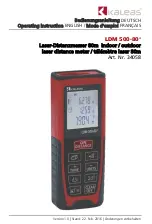
Talking to the instrument
Computers acting as controllers communicate with the instrument by
sending and receiving messages over a remote interface. Instructions for
programming normally appear as ASCII character strings embedded inside
the output statements of a “host” language available on your controller. The
input statements of the host language are used to read in responses from the
logic analyzer.
For example, HP BASIC uses the OUTPUT statement for sending commands
and queries. After a query is sent, the response is usually read in using the
ENTER statement.
Messages are placed on the bus using an output command and passing the
device address, program message, and terminator. Passing the device address
ensures that the program message is sent to the correct interface and
instrument.
The following HP BASIC statement sends a command which sets the
threshold voltage for channels 0 through 7 to TTL:
OUTPUT < device address > ;
":LCHANNEL:THRESHOLD LCHAN0_7,TTL"<terminator>
The < device address > represents the address of the device being
programmed. Each of the other parts of the above statement are explained in
the “Program Message Syntax” which follows.
Introduction to Programming
Talking to the instrument
11
Содержание 54620A
Страница 6: ...6 ...
Страница 9: ...1 Introduction to Programming ...
Страница 21: ...2 Programming Getting Started ...
Страница 35: ...3 Programming over HP IB ...
Страница 40: ...40 ...
Страница 41: ...4 Programming over RS 232 C ...
Страница 48: ...48 ...
Страница 49: ...5 Programming and Documentation Conventions ...
Страница 53: ...Programming and Documentation Conventions The command tree 53 ...
Страница 60: ...60 ...
Страница 61: ...6 Status Reporting ...
Страница 63: ...Status Reporting Data Structures Figure 4 Status Reporting 63 ...
Страница 68: ...68 ...
Страница 69: ...7 Installing and Using the Programmer s Reference ...
Страница 76: ...76 ...
Страница 77: ...8 Programmer s Quick Reference ...












































